Stir-frying beef is a culinary delight that combines the savory flavors of spices and sauces with the succulence of perfectly cooked meat. However, achieving that tender, juicy texture that melts in your mouth can be a challenge, especially for home cooks. Whether you’re preparing a quick weeknight dinner or a festive feast, knowing how to stir-fry beef to perfection can elevate your dishes to restaurant-quality standards. In this comprehensive guide, we’ll delve into the secrets of how to cook tender stir-fried beef, from selecting the right cut to mastering the stir-fry technique. By the end, you’ll be equipped with the knowledge and skills to create mouthwatering beef dishes that will impress even the most discerning palate.
Understanding Beef Cuts for Stir-Frying
The first step in achieving tender stir-fried beef is selecting the appropriate cut of meat. Not all beef cuts are suited for stir-frying; some are too tough or fatty, which can lead to an unpleasant texture. Here are some of the best beef cuts for stir-frying:
-
Sirloin Steak: Known for its tender texture and flavor, sirloin steak is an excellent choice for stir-frying. It has a good balance of lean meat and marbling, which ensures it stays juicy during cooking.
-
Ribeye Steak: Ribeye is another tender cut that works well in stir-fries. Its rich, buttery flavor and tender texture make it a luxurious option, though it can be more expensive.
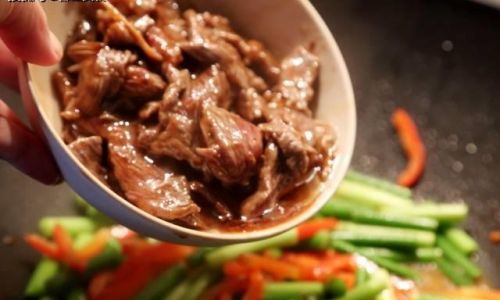
-
Flank Steak: Flank steak, while slightly tougher, becomes tender when sliced thinly against the grain and cooked quickly over high heat. It’s also more affordable, making it a great choice for budget-conscious cooks.
-
Skirt Steak: This thin, flat cut is perfect for stir-frying due to its quick cooking time. It has a robust flavor and a slightly chewy texture that many people enjoy.
When choosing beef for stir-frying, look for cuts that are labeled as “steak” or “beef for stir-fry” at your butcher or grocery store. Avoid cuts like chuck or brisket, which are better suited for slow cooking methods like braising or stewing.
Preparation Techniques for Tender Beef
Once you’ve selected your beef cut, proper preparation is key to achieving tenderness. Here are some essential steps to follow:
-
Trimming Fat: Remove any excess fat from the beef before slicing. Fat can cause the beef to splatter in the pan and can make the final dish greasy.
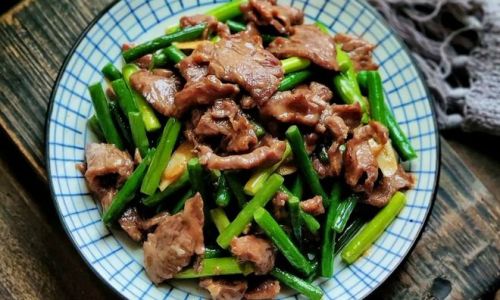
-
Slicing Technique: Always slice the beef against the grain. This means cutting perpendicular to the muscle fibers, which helps to shorten them and make the meat more tender. Use a sharp knife to ensure clean, even slices.
-
Marinating: Marinating beef before stir-frying can add flavor and tenderize the meat. A simple marinade of soy sauce, rice vinegar, garlic, ginger, and a touch of sugar or honey can work wonders. Marinate for at least 30 minutes, or preferably overnight in the refrigerator for maximum flavor penetration.
-
Tenderizing: For extra tenderness, you can physically tenderize the beef by pounding it lightly with a meat mallet or using a tenderizing tool. This breaks down the muscle fibers and makes the meat more pliable.
The Stir-Fry Technique: From Pan to Plate
Now that your beef is prepared, it’s time to tackle the stir-fry technique. Here’s a step-by-step guide to ensure success:
-
Heating the Pan: Preheat your stir-fry pan or wok over high heat until it’s very hot. This is crucial for creating a sear on the beef, which locks in juices and flavor. Use a pan that conducts heat well, such as cast iron or stainless steel.
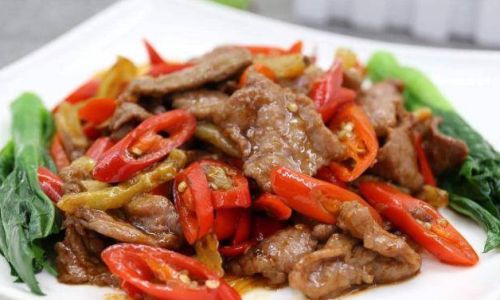
-
Adding Oil: Once the pan is hot, add a small amount of oil—just enough to coat the bottom. Peanut oil, vegetable oil, or sesame oil are all good choices for their high smoking points and neutral flavors.
-
Stir-Frying the Beef: Add the sliced beef to the hot pan in a single layer, avoiding overcrowding. Stir-fry for just a few minutes, until the beef is browned on the outside but still pink inside for medium-rare. If you prefer your beef cooked more, continue stir-frying until it reaches your desired doneness.
-
Removing the Beef: Once the beef is cooked, transfer it to a plate and set it aside. This stops the cooking process and prevents the beef from overcooking in the residual heat.
-
Stir-Frying Vegetables: In the same pan, add a bit more oil if needed and stir-fry your chosen vegetables over high heat. Vegetables like bell peppers, broccoli, snap peas, and carrots work well. Stir-fry until they are tender-crisp, retaining some crunch.
-
Combining Ingredients: Return the cooked beef to the pan with the vegetables. Add any sauce or seasoning you like, such as soy sauce, oyster sauce, or a homemade stir-fry sauce. Stir everything together until heated through and well combined.
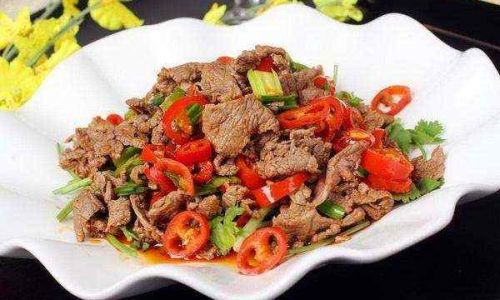
-
Serving: Serve your stir-fried beef immediately while it’s hot and juicy. Pair it with steamed rice, noodles, or a fresh salad for a complete meal.
Tips for Perfect Stir-Fried Beef
Here are some additional tips to help you perfect your stir-fried beef:
-
Don’t Overcrowd the Pan: Overcrowding the pan will lower the temperature and steam the beef rather than sear it, resulting in a less tender texture. Stir-fry in batches if necessary.
-
Use High Heat: High heat is essential for creating a flavorful sear on the beef. Make sure your pan is very hot before adding the oil and beef.
-
Rest the Beef: After slicing, let the beef rest for a few minutes at room temperature before stir-frying. This allows the juices to redistribute, ensuring a juicier final dish.
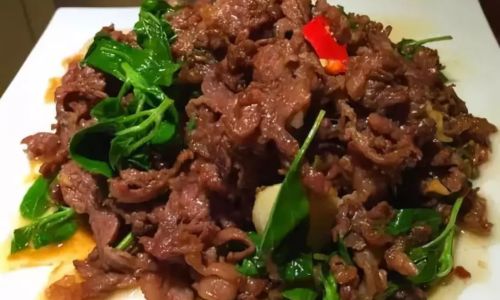
-
Adjust Cooking Time: Cooking time will vary depending on the thickness of your beef slices and your preferred doneness. Keep a close eye on the beef and adjust the cooking time accordingly.
-
Experiment with Sauces: Stir-fried beef is highly versatile and can be flavored with a variety of sauces. Experiment with different combinations to find your favorite.
Conclusion
Mastering the art of tender stir-fried beef takes practice and attention to detail, but with the right techniques and ingredients, you can create restaurant-quality dishes at home. By selecting the appropriate beef cut, preparing the meat properly, and using the correct stir-fry technique, you’ll be able to enjoy juicy, tender beef that’s bursting with flavor. Whether you’re a seasoned cook or a beginner in the kitchen, these tips and techniques will help you elevate your stir-fried beef dishes to new heights. So, gather your ingredients, heat up your pan, and start stir-frying your way to culinary excellence!
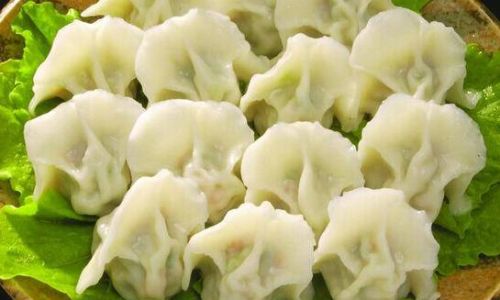

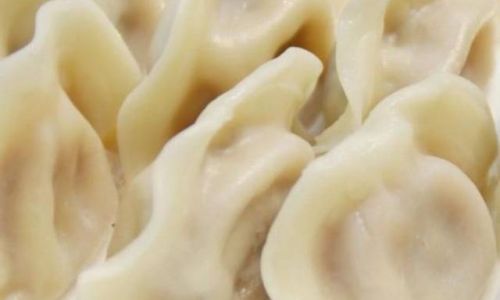
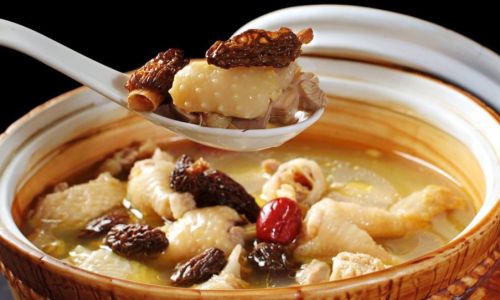
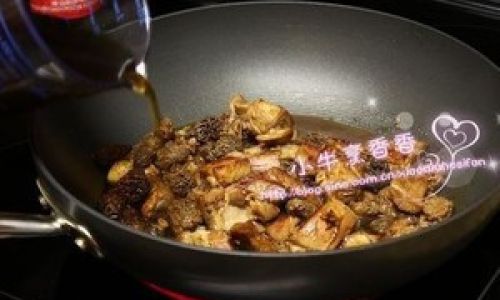

0 comments